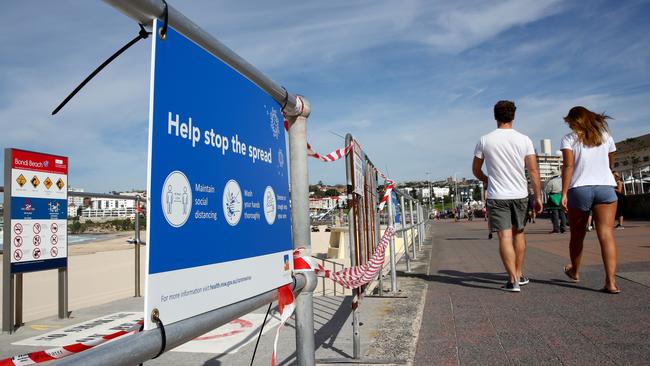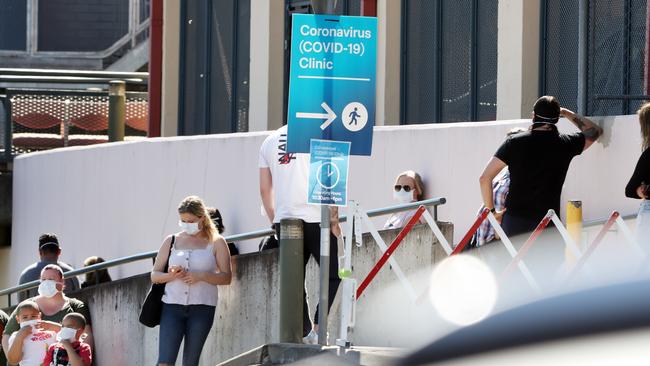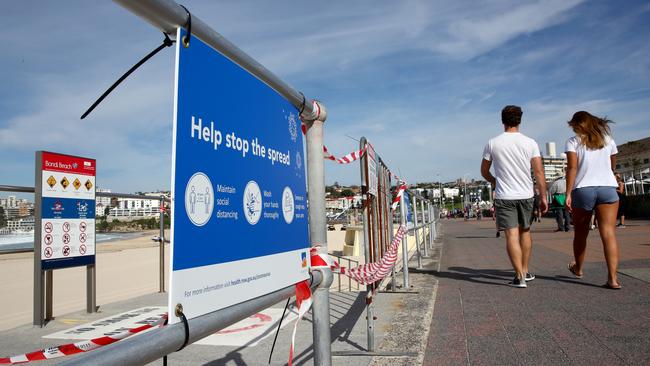Fears of new outbreaks outweigh lockdown limitations for readers
The government has detailed a plan to lift lockdown once the curve holds flat, however more than 70 per cent of readers polled want tough restrictions to continue until the end of winter.

NSW
Don't miss out on the headlines from NSW. Followed categories will be added to My News.
- $50m licence fees waived, NSW cases rise by 16
- Did coronavirus escape from a lab during ‘risky’ research?
Australia’s road out of coronavirus hibernation will start with opening high value but low infection risk industries as soon as the curve holds flat and rapid disease testing capacity is locked in.
However, a majority of The Daily Telegraph readers believe that restrictions should stay in place till at least the end of winter.
In an online poll, more than 70 per cent of readers believed despite the inconvenience, the tough restrictions should continue to prevent new outbreaks.
Only 41 new COVID-19 cases were recorded nationally yesterday, but the government has insisted the low rate must be maintained for “many weeks” before it moves to resuscitate the economy, which is currently headed for its worst downturn since the Great Depression.

Targeted easing of restrictions to allow sectors such as manufacturing, construction, agriculture and offices – where social distancing could be applied – to get back to work could mitigate dire economic conditions forecast by the International Monetary Fund overnight.
The Daily Telegraph understands restrictions on service industries with high levels of face-to-face contact such as hospitality will remain, but other businesses would recommence operating well before the September time frame initially given by health officials.
Workplaces tapped to reopen would be provided with clear guidelines on how to minimise the risk of virus transmission, such as implementing an alternate rostering system with some employees at home and others at the office.
Instructions on how to deal with a case of coronavirus in a business, including obligations to shut down and deep clean the workplace, would also be provided to employers.

Prime Minister Scott Morrison yesterday mapped out a path forward for Australia if its success in containing COVID19 holds for “many weeks”, but warned restrictions on non-essential movement and social gatherings would remain.
“Broader travel I think is … very dangerous, but we need to get our construction industry going, our infrastructure programs, our manufacturing industries,” he said.
“We have got to look to those areas of the economy that can start picking up again, without creating great health risks.”
Mr Morrison said “not one country in the world” had been able to plan a path out of coronavirus restrictions but Australia was “better positioned than many” to do so.
“We have bought valuable time to plot our way out,” he said.
However any changes to current restrictions would only be able to happen in tandem with a significant increase in Australia’s coronavirus testing, contact tracing and surveillance capability.
Health officials’ ability to quickly detect, trace and isolate localised outbreaks – such as the cluster of cases currently gripping north west Tasmania – will be critical to the long-term success of relaxed restrictions.
So far states have opted to impose restrictions broadly, but it is believed they will be asked to consider imposing only localised lockdowns if needed so areas without coronavirus cases are not unnecessarily hurt.
Internationally countries that have eased strict rules after successfully containing COVID19, including South Korea, Singapore and Japan, have experienced spikes in cases.
It comes as the IMF has warned Australia’s economy will shrink by a staggering 6.7 per cent in 2020 – its sharpest downturn for any year since the Great Depression.
The IMF tips the unemployment rate will average 7.6 per cent across 2020 and rise to 8.9 per cent in 2021.
The forecast puts the economy on track for its deepest full-year contraction since the 1930s and the worst recession since the end of World War II.
Originally published as Fears of new outbreaks outweigh lockdown limitations for readers

